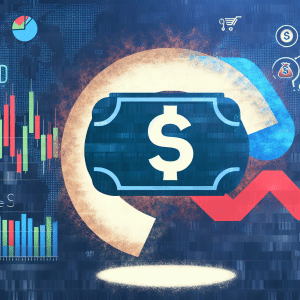Republicans’ sweeping student loan overhaul: What investors and advisors must know now
The GOP’s proposed “One Big Beautiful Bill” aims to reshape federal student lending in ways that could ripple far beyond borrowers, impacting economic behavior, financial markets, and even the broader investment landscape. While the bill touts fiscal savings and taxpayer relief, the reality for millions of borrowers—and by extension, the economy—is far more complex. Here’s a deep dive into what this means, with exclusive insights you won’t find elsewhere.
1. Fewer repayment plans, but bigger monthly payments
The GOP plan drastically cuts repayment options from a dozen to just two: a standard fixed plan and a new “Repayment Assistance Plan” (RAP). RAP payments would scale from 1% to 10% of income, with a $10 minimum monthly payment. Sounds straightforward, but the devil’s in the details.
According to the Student Borrower Protection Center, a typical borrower could pay nearly $3,000 more annually under RAP compared to the Biden administration’s blocked SAVE plan. This isn’t just a minor tweak—it’s a fundamental shift away from affordable monthly payments toward heavier debt burdens.
Investor insight: Higher monthly payments could increase default rates, reducing consumer spending power. This is a red flag for sectors reliant on discretionary spending, like retail and travel. Advisors should caution clients about potential economic headwinds as consumer wallets tighten.
2. Extended timelines to forgiveness mean prolonged debt stress
Currently, income-driven repayment plans forgive balances after 20-25 years. The GOP’s RAP extends this to 30 years, with fixed plans stretching up to 25 years depending on loan size. For borrowers with debts exceeding $100,000, this means a quarter-century of payments.
Debt Collective co-founder Astra Taylor warns this could trigger an “explosion of senior debtors,” burdening individuals well into their prime earning and spending years.
What this means for investors: Prolonged debt repayment delays wealth accumulation, home buying, and retirement savings. Real estate markets, especially first-time homebuyer segments, may feel the pinch. Financial advisors should integrate debt horizon analysis into client planning, emphasizing early debt management strategies.
3. Loss of key protections during financial hardship
The GOP bill would eliminate unemployment and economic hardship deferments for loans disbursed after mid-2025/2026. These deferments currently allow borrowers to pause payments during tough times without accruing interest.
Michele Zampini of The Institute for College Access & Success warns this could push struggling borrowers into default faster, worsening financial instability.
Actionable advice: Advisors should proactively educate clients about the diminishing safety nets and encourage emergency fund building. Investors in consumer credit and loan servicing sectors should monitor rising default risk, which could affect credit markets and loan-backed securities.
Beyond the headlines: What Extreme Investor Network uniquely sees
Trend alert: This student loan overhaul is part of a broader GOP strategy to reduce federal spending by shifting financial burdens back onto individuals. While this may improve short-term budget metrics (Cassidy claims $300 billion savings), it risks long-term economic drag by suppressing consumer demand.
Unique data point: Recent Federal Reserve research shows that student debtors with higher monthly payments reduce their spending on non-essentials by up to 15%. If the GOP plan passes, this contraction could ripple through consumer-driven industries, slowing GDP growth.
What’s next?
- For investors: Monitor sectors sensitive to consumer credit stress—financial services, housing, and retail. Consider defensive positioning or hedges against rising defaults.
- For financial advisors: Reassess client debt strategies, emphasizing accelerated repayment where possible and diversifying income sources to mitigate longer repayment timelines.
- For policymakers: A nuanced approach is critical. Balancing fiscal responsibility with borrower protections can prevent a cascade of defaults that ultimately harm taxpayers more than help them.
In conclusion, the GOP’s student loan proposals are more than just policy shifts—they’re economic signals with far-reaching investment implications. At Extreme Investor Network, we’ll continue to track these developments, providing you with the expert analysis and actionable insights you need to navigate this evolving landscape.
Stay tuned for updates as the Senate debate unfolds—and prepare now for the financial ripple effects that will follow.
Source: 3 student loan changes in Republicans’ ‘big, beautiful’ bill

